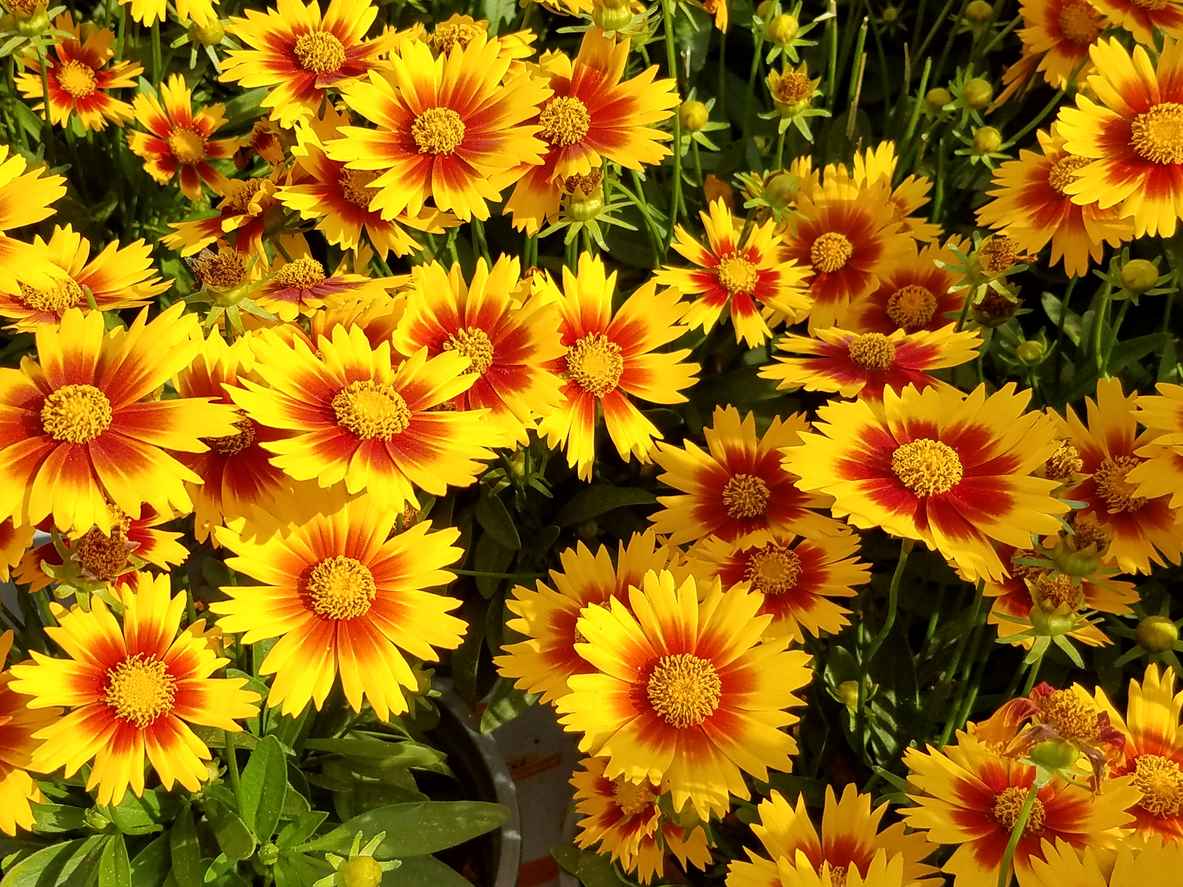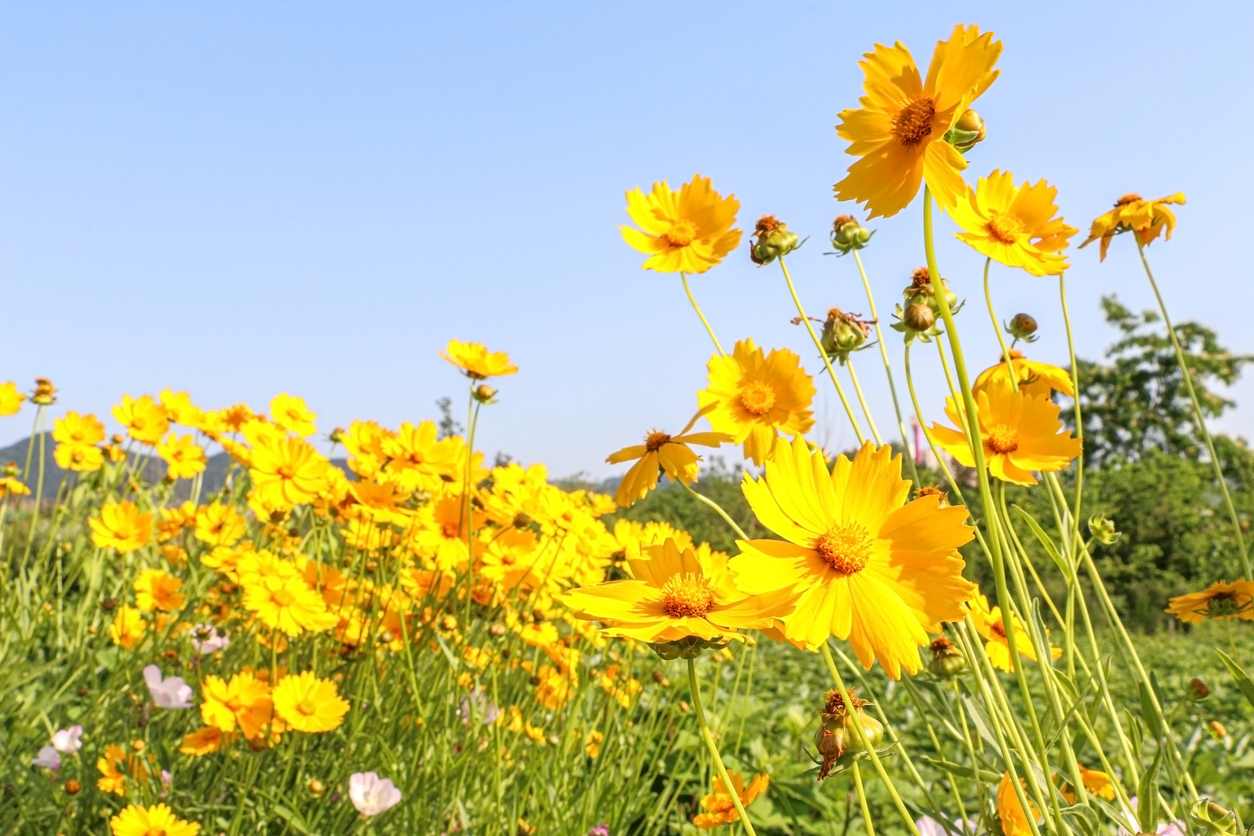
Coreopsis foliage and flowering
Coreopsis have daisy-like flowers with petals mostly yellow, sometimes adorned with purple around the heart.
To note : Some varieties also offer flowers in varying shades of pink.
With fine, elongated foliage, Coreopsis displays a slender silhouette thanks to its vertical flower stems which support a single flower per stem. Forming rounded but dense clumps, it generally reaches a height from 20 to 55 cm for the vast majority of varieties, and can rise up to 70/80cm for the older ones.
It lends itself perfectly to the approval of various types of massifspositioning itself:
- the edge for the smallest varieties (dwarf),
- or in the background or at the center of floral arrangements.
A grouping of Coreopsis clumps creates a uniform and harmonious border, visible from afar.
Caring for this plant
Thanks to its ability to reseed naturally, Coreopsis can beautify the edges of paths, the bases of fences and well exposed walls, arid gardens or areas with a wilder appearance. However, its ability to flower can weaken it. Regularly removing spent flowers to prevent seed formation can alleviate this problem, as can natural propagation by seed, growth via rhizomes, and sharing clumps to renew the plant.
The harmony between Coreopsis flowers and those of plants such as Népétas, Agastaches, Calaminthes, or other perennials with blue hues, create particularly aesthetic floral arrangements. Varieties with pink flowers pair well with white or pale blue blooms.
To successfully grow Coreopsis


Annuals and perennials have the same needs: full sun exposure, preferably light and well-drained soil even if they can cope with poor and stony soil.
- Regular cleaning: cut off faded flowers to encourage the next ones.
- Water, but not too much: most species tolerate drought very well. Water only in case of prolonged drought.
- Easy multiplication: consider dividing older clumps in fall or early spring.
Seedlings are quite easy to succeed under a frame or in a nursery, from May to July.
Which varieties to combine?
Coreopsis and pink filipendula
The starry flowers of whorled coreopsis (C. verticillata) bloom on thin stems emerging from divided foliage. This species does not exceed 60 cm in height. Pair it with a pink filipendula with bouquets of tiny flowers.
Recommended varieties : ‘Zagreb’ or ‘Crème brûlée’.
Coreopsis lanceolata and Stipa tenuissima
A very simple but effective association between a Coreopsis lanceolata ‘Sterntaler’ and a grass (Stipa tenuissima). A remarkable effect from early summer to mid-fall.
Other recommended varieties : ‘Baby Gold’, ‘Baby Sun’, ‘Ville de Genève’, ‘Brown Eyes’.
Coreopsis in a planter
Coreopsis bring an essential touch of color to this large planted monochrome planter hydrangea, cosmos and bacopa. An ephemeral painting in a planter but durable in the ground.
Recommended varieties : Those with double flowers, ‘Sunray’, ‘Sunburst’, ‘Early Sunrise’…
Coreopsis: a new color
With his pdark purple spreads edged with white, Coreopsis verticillata ‘Jive’ changes radically from its golden yellow cousins. A “UFO” which will find its place in contemporary gardens, black or silver pots, predominantly white scenes… An original perennial plant to be planted preferably in the sun to take advantage of its abundant flowering from June to October. H. 40-45 cm.

